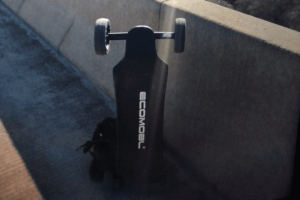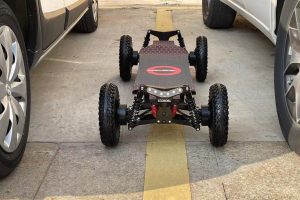Introduction
Electric skateboards have revolutionized the skateboarding scene, with advancements in lithium-ion batteries and motors enabling riders to achieve greater speeds and distances without the need for manual pushing. Lithium-ion battery and motor advances now provide power-assisted riding, reaching speeds and distances beyond unaided pushing.
However, traditional non-electric skateboards retain devoted fans treasuring their pure experience. This analysis compares the core attributes of electric versus regular boards. Factors examined include speed, effort requirements, range or distance capabilities, maneuverability, costs, and maintenance needs.
Quick look sheet
| Aspect | Electric Skateboards | Traditional Skateboards |
|---|---|---|
| Speed and Efficiency | Higher speeds and longer distances with motorized power. | Lower speeds, physical effort required. |
| Convenience and Versatility | Ideal for commuting, versatile for various terrains. | Typically suited for smooth surfaces and urban environments. |
| Beginner-Friendly | Easier for beginners, offer stability and control. | Steeper learning curve, require more balance and skills. |
| Skill Development | Less focus on physical skill, more on maneuvering. | Requires greater physical skill, improving balance and agility. |
| Creativity and Style | Limited tricks and stunts, less emphasis on style. | Abundant opportunities for tricks, stunts, and personalization. |
| Affordability and Simplicity | The initial cost may be higher, require maintenance. | Generally, more affordable upfront, less maintenance. |
What are Electric Skateboards?
Electric skateboards, also known as e-boards or powered boards, basically put rechargeable lithium-ion battery packs and electric motor systems on a normal skateboard. This gives it a boost of speed and extends how far you can ride compared to just pumping your legs.
The motor is usually near the back truck and you control it either with a handheld remote or using self-balancing tech on fancier models. More advanced setups let you choose different speed modes and can recharge the battery as you brake downhill.
Now that we know what an e-skateboard is, let’s dive into how they differ from traditional non-electric skateboards. There are some tradeoffs between the high-tech e-boards and plain skateboards.
The Pros and Cons of Electric Skateboards
| Pros | Cons |
|---|---|
|
|
The Pros and Cons of Traditional Skateboards
| Pros | Cons |
|---|---|
|
|
Factors to Weigh When Choosing a Board
- Purpose: Commuting long distances quickly? Leisure cruising or carving? Interested in tricks and stunts? Consider whether you prioritize speed, fun, or skill-building.
- Skill Level: A beginner may feel more secure on an electric board, while experienced shredders get more out of a traditional setup for honing technique.
- Budget: Dollars matter in the short and long run. Traditional setups are easier on wallets upfront. But motors could save on gas money over time for daily riders.
- Environmental Impact: Electric power raises some eyebrows, but swapping gas for electric activity burns less emissions. Traditional carries a simpler production footprint too.

Conclusion
In the choice between electric and traditional skateboards, the decision boils down to your personal preferences and needs. Electric cruisers blast off but batteries bump costs and maintenance. Traditional boards build skills through effort, keeping setups affordable. There is a need to weigh goals, talents, and finances before your choice. Skating cultivates experiences worth the journey.
FAQs
- Q: How do electric boards do on hills compared to regular boards?
- Electric boards have a big advantage on hills since they’ve got that motor to help power you up. Steep hills are no sweat for them. With a regular board, hills take some grunt work.
- Q: How long does it take to juice up an electric board battery?
- Charge times are usually 2-6 hours for a full battery, depending on size and charger power. A lot of chargers can get you to 80% in under two hours though, which is plenty for most rides.
- Q: What’s the weight limit for electric boards usually?
- Most manufacturers rate their electric boards for riders up to about 200-250 pounds. Heavier riders will see reduced range and acceleration compared to lighter folks.
- Q: Can I do tricks on an electric like a regular board?
- Electric boards aren’t as nimble, so tricks aren’t their strong suit. If flips and spins are your game, stick with a regular board made for maneuvers.
- Q: Are electric boards even legal to ride on roads and sidewalks?
- Laws vary from place to place. Some spots allow roads and bike lanes, while others see them as motor vehicles needing licenses. Sidewalks are often okay for regular boards only. Check your local rules!
- Q: Can I still use an electric skateboard like a regular if the battery’s kaput?
- Yes, electric boards can be cranked manually when drained. But they may feel bulkier than a board designed without battery weight.
Read More
- Electric Mobility Skateboards Vs Unicycles – Ecomobl
- All Terrain Electric Skateboards Choose – Ecomobl
- Mountain Board Stopping – Ecomobl
- Skateboard Motors Belt Vs Direct – Ecomobl
- Practical Style Electric Skateboards Commute – Ecomobl






